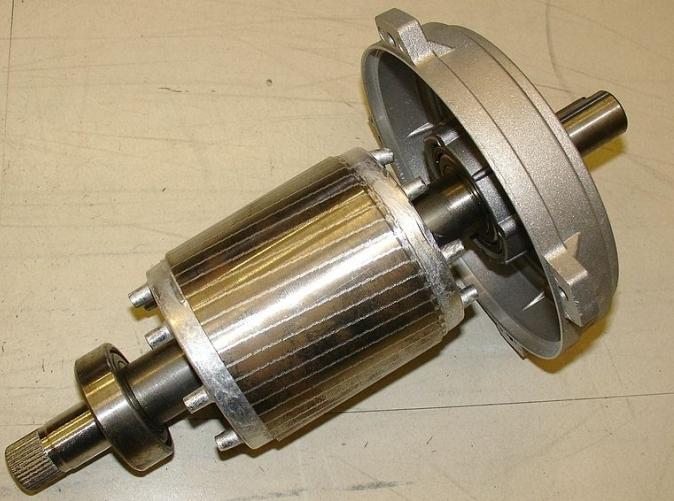An asynchronous single-phase motor is a machine that converts electrical energy into mechanical energy, which is removed in the form of torque on its shaft. It got its name because when the load on the shaft increases, its speed decreases, lagging behind the rotation frequency of the magnetic field. The difference between these speeds is called slip.
An asynchronous single-phase motor, like all electric machines, consists of two main parts - the stator and rotor. Inside the terminal box mounted on the housing, conclusions are made that are labeled differently. There are four of them, and in order to connect them correctly, you must understand the purpose of each of the two pairs of wires.
Asynchronous single-phase motor differs from the usual three-phase electric motor in the number of windings and their configuration. There are two of them, and they are not the same. The main winding is designed to create a rotating magnetic field of elliptical shape.
An additional or auxiliary inductor is located at right angles to it, generating the starting torque needed to give the rotor initial rotation. The need for this element is due to the fact that one electrical winding excites a magnetic field, the axis of symmetry of which remains stationary, and therefore, additional force is required to move the rotor from its place. Its shape is elliptical, and it can be represented as the sum of two circular fields with opposite directions, one of which contributes to rotation, and the other prevents it. The characteristics of such a machine for this reason are much worse than those of a three-phase one, but in an apartment or a house you have to put up with this drawback.
As a rule, an asynchronous single-phase motor is a machine of low power, most often used for household electrical appliances. Examples include a hairdryer, vacuum cleaner, coffee grinder or food processor. Electric motors of this type are quite capable of their task, especially since there is practically no alternative to them.

The connection of a single-phase induction motor has its own characteristics, due to the specific design. The fact is that the starting winding is not intended for continuous operation. The machine starts up in short-term mode. After gaining the working angular velocity, the excitation circuit of the additional field must be open, otherwise it will overheat dangerously and possibly fail. The launch time, as a rule, does not exceed three to five seconds. Opening can be done either manually (just let go of the "Start" button), or automatically (using the opening time switch). The most advanced devices use centrifugal systems designed to turn off the acceleration winding at the moment when the asynchronous single-phase motor reaches its rated rotation speed.
In addition to the additional winding and the start button, there is another element necessary in order to make the single-phase asynchronous motor rotate. The connection circuit provides a series connection with the inductance of the circuit, providing phase displacement. As a rule, this is a capacitor, when passing through which the electric current vector changes direction relative to the voltage vector.